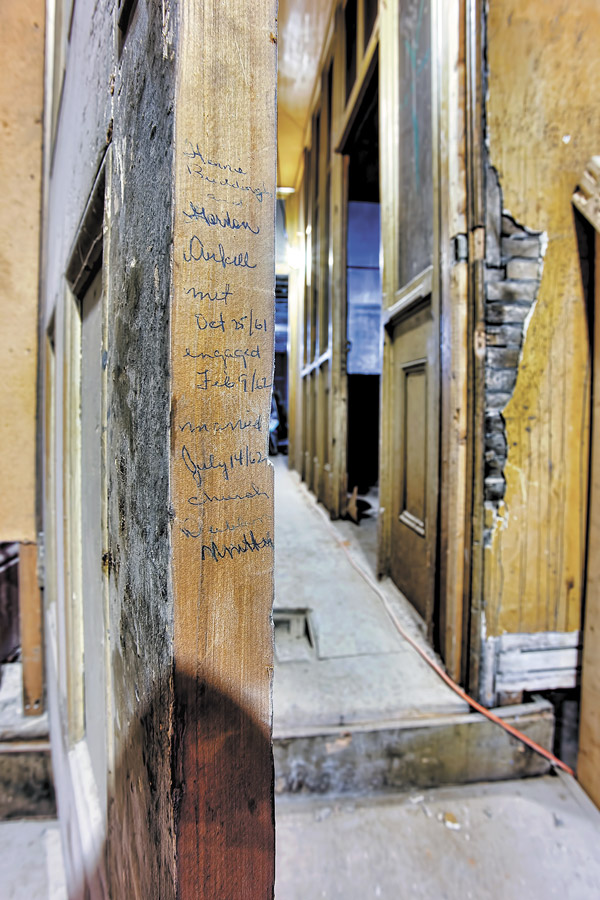Not everyone likes to go to work every day. But that’s not the case for the approximately 450 members of the Canadian Association of Heritage Professionals, says it president.
“They are very passionate, committed, and hard working,” says Gerry Zegerius, a structural engineer and senior associate with Guelph-based Tacoma Engineers Inc.
A national organization with members spread across the country, CAHP is comprised of people who are dedicated to identifying, conserving, preserving and—in many cases—repurposing heritage buildings. Working in both the public and private sectors, they have participated and provided input into key pieces of legislation such as the Heritage Act and the Planners Act.
But it’s not an organization which is restricted to one profession or trade, he stresses.
“Our members range from heritage window restorers, to heritage masons, to architects and engineers.”
If that makes for a diversified body, CAHP’s strength and unifying theme is its passion and dedication to heritage issues and projects, he says.
“We bring a unique skill set and extra level of care (to heritage projects),” says Zegerius, noting that CAHP partners extensively with the National Trust, the Architectural Conservancy of Ontario, and other heritage groups on various initiatives and issues.
Those organizations have a commitment to protect heritage buildings, while CAHP’s members have the abilities and technical skills to achieve that protection, he points out.
Members of the association are designated as such and “that designation is starting to gain traction. Some RFP’s (Requests for Proposals) are now requiring it.”
Protecting the integrity of the designation is the reason CAHP administers rather rigorous admittance standards. Prospective members must have a “demonstrated knowledge of their particular field of expertise” and provide letters of reference. That documentation is reviewed by the association’s membership committee which then makes a recommendation to the association’s 15-member board.
“Not every application is accepted, although we will accept an intern member.”

Touching on the membership committee, Zegerius says it is one of the hardest working and busiest committees of a very active volunteer-driven association which has only one paid employee.
There are several other committees and the full board “meets” once a month through tele-conferences. It wouldn’t be practical from either a financial or logistical perspective to meet in person. However, ideas are exchanged and networking carried out at the National Trust’s annual conference and the meetings of the association’s three chapters, Ontario, British Columbia, and Quebec/Maritimes, he says. (Members in other regions of the country are affiliated with one of those chapters.)
Citing a number of successful heritage restoration projects in cities such as Guelph and Hamilton, he says progress is being made in protecting this country’s dwindling inventory of heritage assets and some of the credit does belong to the association.
Of course, recognition also should be extended to other organizations and to developers “who often take large financial risks and who are not always acknowledged for doing so.”
Some developers at least are looking for ways to incorporate heritage buildings and/or elements into their projects and “are asking questions” on how that can be realized. But many threats remain, especially in high property values areas such as Toronto where high densities are needed to make projects financially viable.
“Not everything is going to be saved and it often comes down to economics. That’s why heritage professionals have to be skilled negotiators—to make the case why a developer should spend another $500,000 on a building.”
Preserving buildings is not just a case of saving the brick and mortar. It often entails hours of painstaking research in libraries and archives piecing together the history of buildings and the stories of the lives of the people who once lived or worked in them, says Zegerius.
As an example, he cites the recently restored Petrie Building in Guelph which is Canada’s last remaining example of a pre-1890 machine stamped metal clad building. Tacoma Engineering was the structural consultant and during an inspection, he discovered some writing on the edge of a door frame in the upper floors which had been left vacant for several decades. It was the engagement and wedding dates of a Gordon and Hennie.
“When I saw this (the inscription) it was too much to resist. I was able to track down the grown family of this couple and sent the picture to them. It turns out Hennie and Gordon met at the Petrie building more than 50 years ago and left their mark. Gordon has passed on, but Hennie was reportedly very happy to see the photo and was able to shed some light on their story.”
It is stories like that which separates heritage work from all other forms of construction, says Zegerius.











Recent Comments